Horrabridge War Memorial ~ Horrabridge, Devon.
Client : Mr. Andrew Collins.

There has been a chapel in the village of Horrabridge since about 1256 A.D. which had been built by the monks of Buckland Abbey. It was pulled down after the Dissolution and a pair of cottages built in its place. In 1891 they too were demolished to make way for the present day church and St. John the Baptist was consecrated in 1893 by the Bishop of Exeter. The Grade II listed church was designed by George Fellowes Prynne, built from local greenstone with sandstone dressings, its architecture is in the Perpendicular style. As an architect he had designed many parish churches throughout England particularly here in the South-West.

We were approached by PO (CS) Andrew ‘Tiny’ Collins from 42 Commando of the Royal Marines to take a look at the war memorial in the village. He was spearheading a campaign to raise funds to clean up the memorial in preparation for Remembrance Sunday and also to commemorate the centenary of WW1.
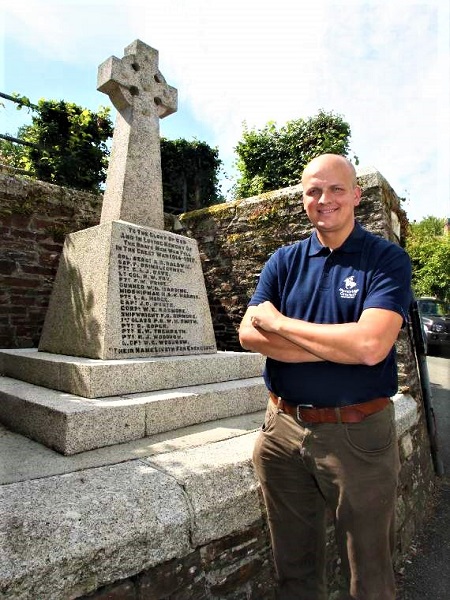
The war memorial itself is set back on an elevated area within the church walls. There is an additional memorial plaque set into the rear wall honouring those who had died during WW2. The church walls and the memorials are also Grade II listed.
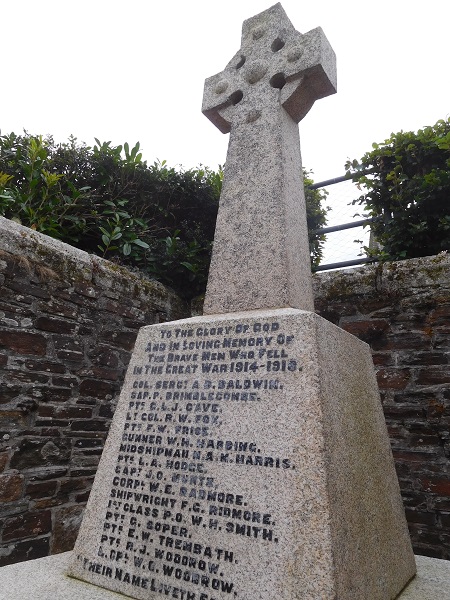
The work required us to clean the granite memorial, re-point the stone walls surrounding it and to re-paint the raised lead lettering commemorating those who had given their lives during conflict.
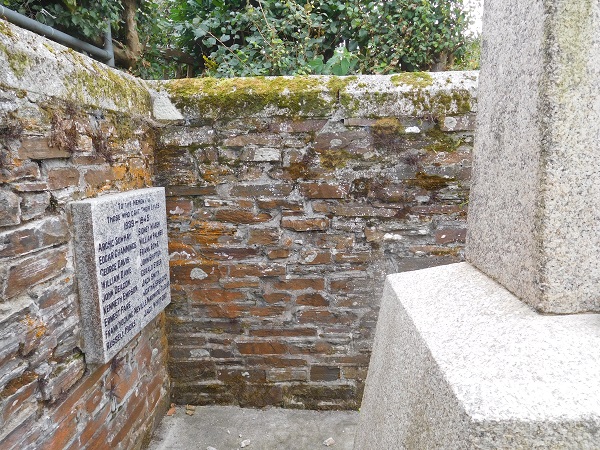
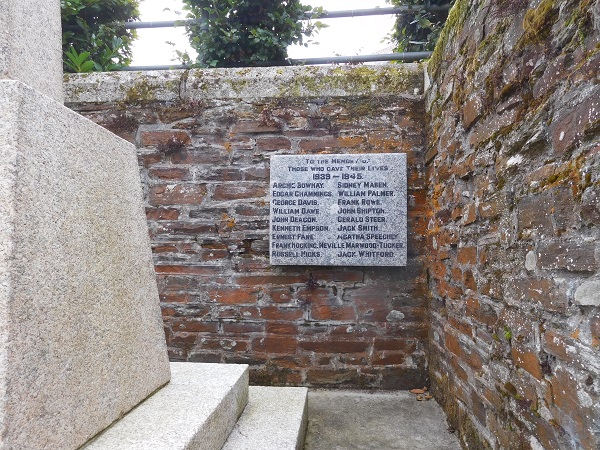
The walls surrounding the memorial had been built using local rustic slate and capped off with a granite coping. Although a lime mortar was used during its construction it had been re-pointed at some point in time using a cement based mortar. And this hadn’t been carried out to a good standard by any means.
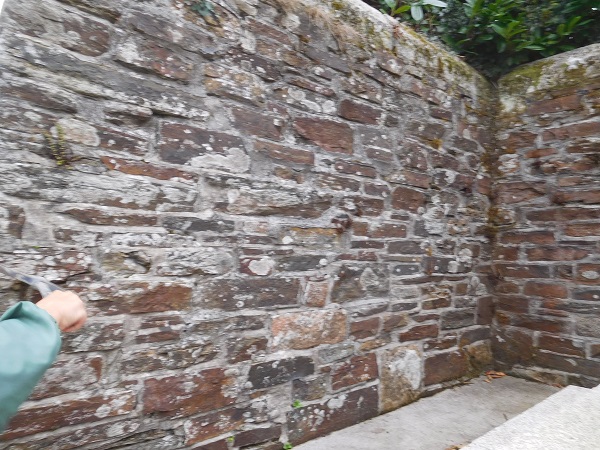
Cement based mortars are no good for stonework. They are not ‘breathable’ and when water or moisture enters into the fabric of a wall it can’t escape. When this freezes it expands causing untold damage to the stonework. A classic example of this is when you see signs that the face of the stone has spalled away from itself. Lime based mortars on the other hand are ‘breathable’ and will let moisture escape back out through the jointing. It will also greatly enhance the appearance of the wall.
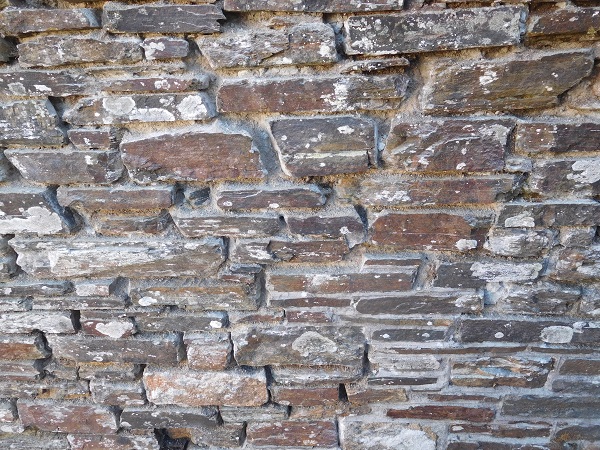
Our first job was to hack out all the cement joints. Most of the pointing was loose and defective and came out easy. Once the joints were hacked out they were flushed out with a hose to remove all the loose dust and debris in preparation for us to re-point.
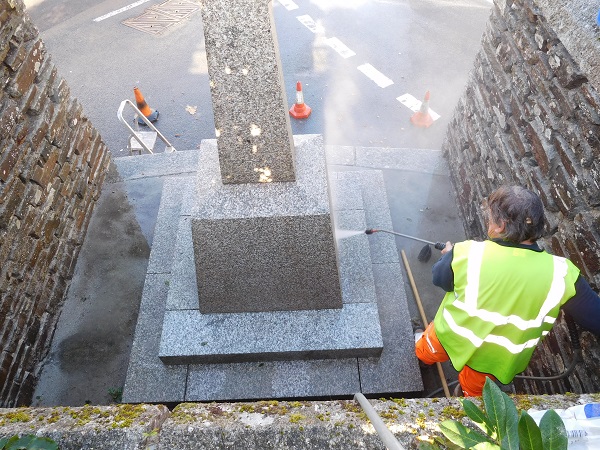
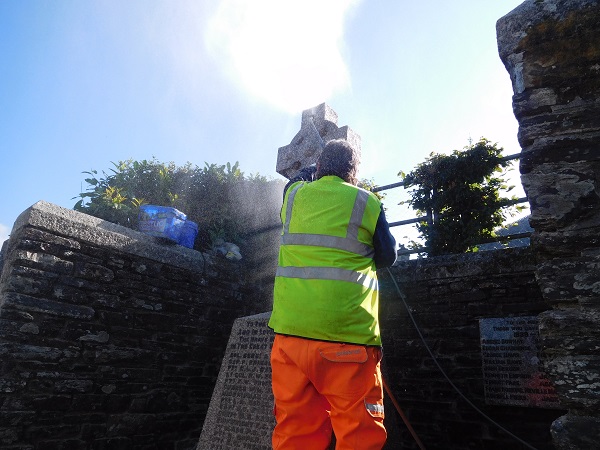
Next the granite memorial, the concrete floor area around it, along with the granite coping stones to the walls, were given a good clean by means of low pressure water jetting to remove algae. We had to be mindful of the raised lead lettering depicting the names on the memorial and these areas were cleaned by hand using just clean water and soft bristle brushes.
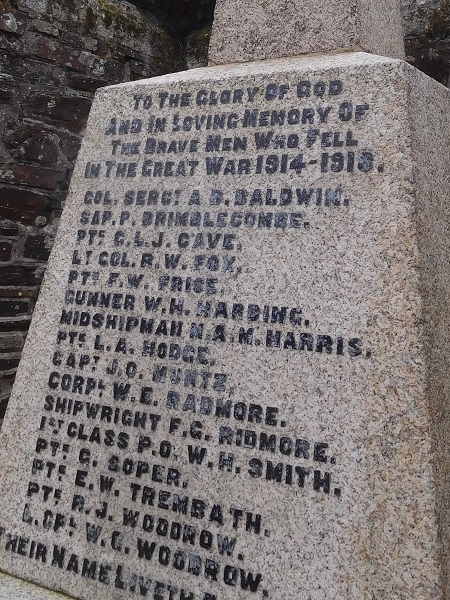
Traditionally over the centuries granite has been lettered in a number of ways. The memorial here at Horrabridge has been lettered in what is termed as the ‘Raised Lead’ method. This can only be achieved by hand. First of all the letters are set out and drawn onto the granite surface in pencil, then small keyholes are drilled into the granite at various points within the body of each letter. Depending on the letter, up to 7 or 8 keyholes can be drilled for each individual letter. Lead is then beaten into the granite forcing the lead into the keyholes which acts as an anchor to hold it in place. The lead is left proud of the surface. From this stage the lead is then cut back in different ways to achieve the desired letterform required. You will find many commemorative war memorials and gravestones around the world are lettered using this method. Another method of lettering is known as the ‘Flush Lead’ method. This too can only be achieved by hand. This method requires the stonemason to firstly ‘V-cut’ the lettering into the surface of the stone. Again keyholes are drilled into the stone and the lead is beaten into place. The lead is then cut back with the surface of the stone using a ‘Lead Paring’ chisel. Finally the lead is rubbed down smooth so it is flush to the surface. This method is best suited for marble and usually found on very early examples of marble memorial work. Either method requires a high level of skill and patience to achieve and considered an art form in its own right.
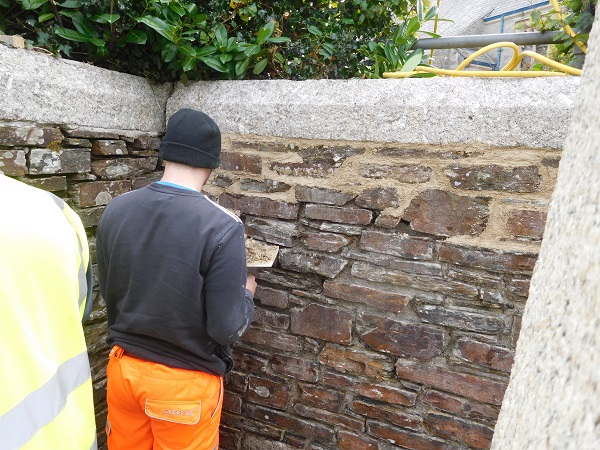
Now that all the preparation work had been completed we were able to start the re-pointing.
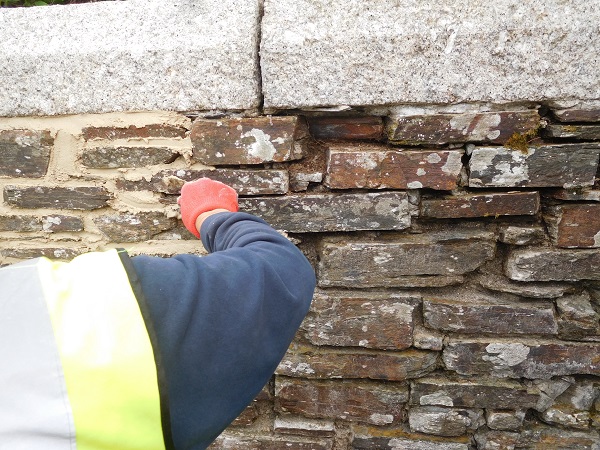
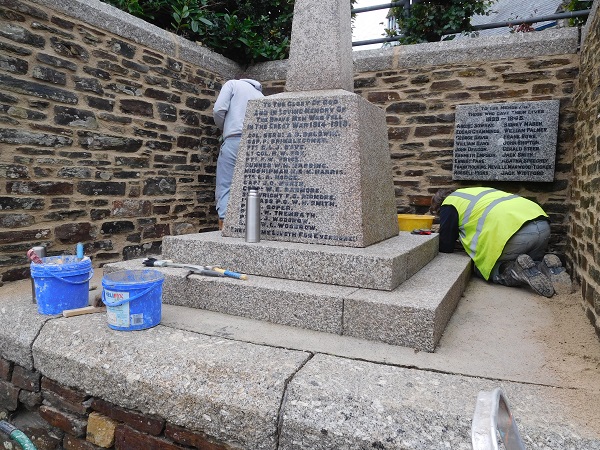
A coarse sand and lime mortar was used for this. The joints are left flush to the surface of the stonework and after a couple of hours they are lightly rubbed in with a stick.
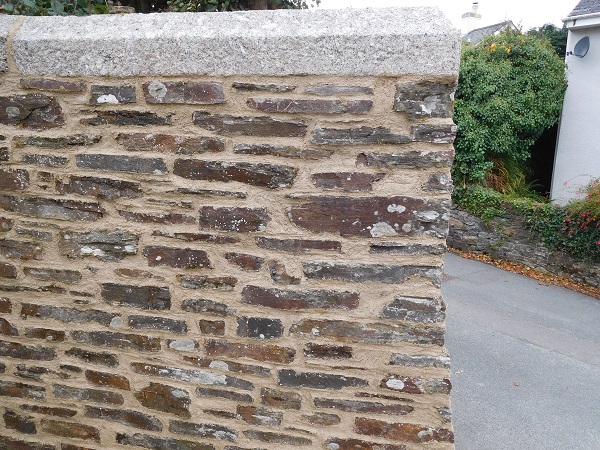
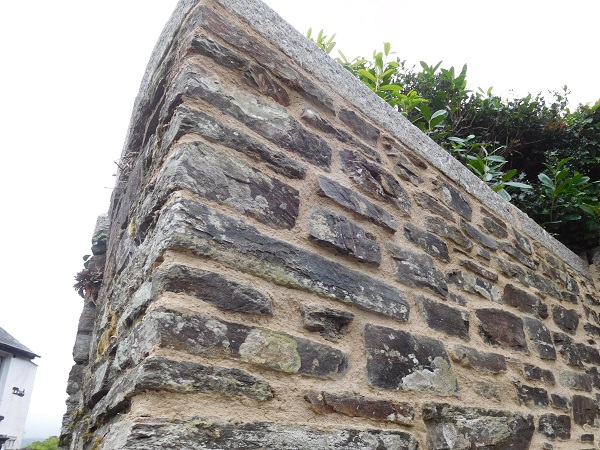
They are then left over night for the initial set to take place. In the morning these joints are finished off further still with a stiff churn brush to show the edge of each stone and reveal the coarse aggregates within the lime mortar.
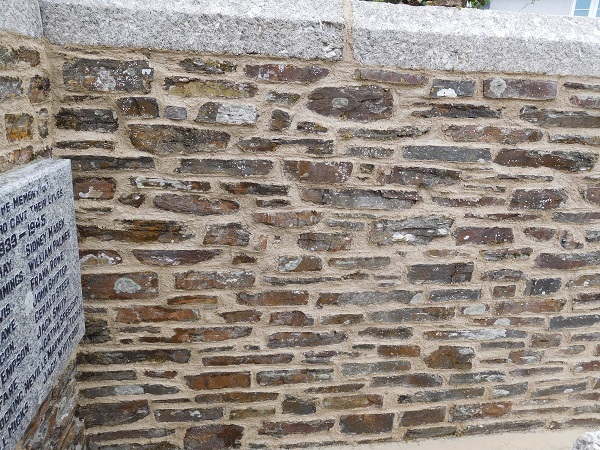
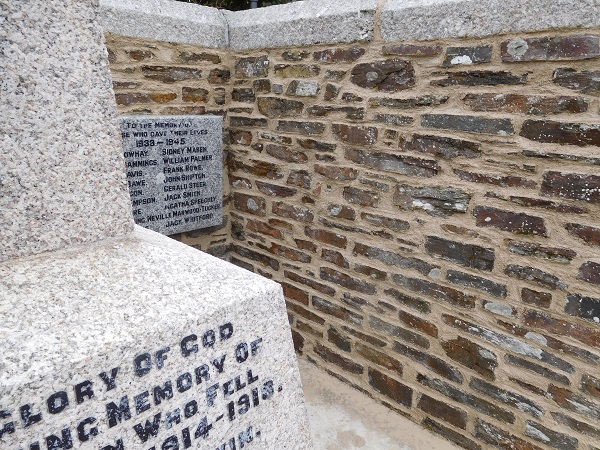
The joints are also sprayed with clean water after brushing to stop the mortar drying out too quick which helps prevent shrinkage.
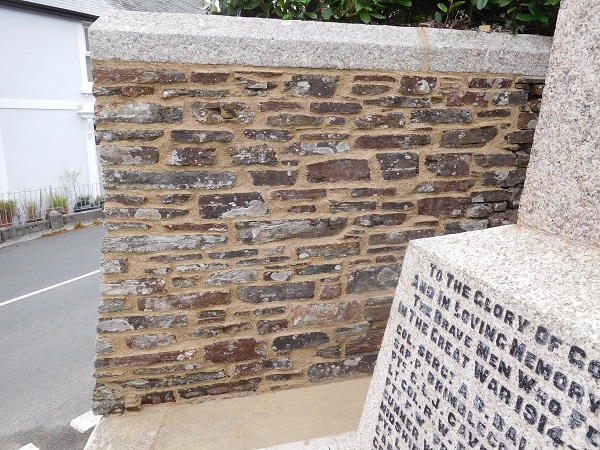
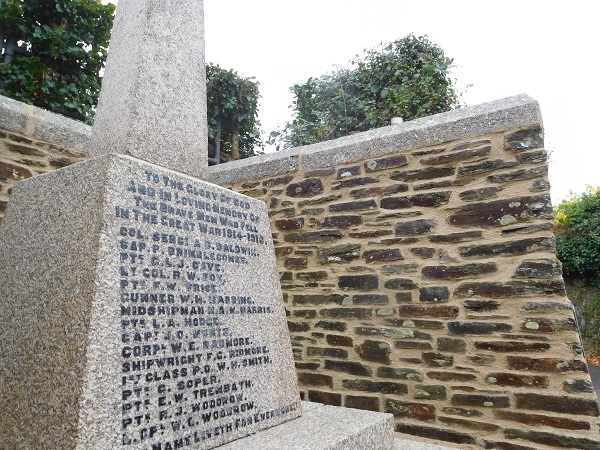
The jointing is still soft at this stage and more periodic brushing and damping down is carried out over the next few days as the mortar begins to finally set. That’s the beauty of lime based mortars. When the re-pointing to the walls surrounding the war memorial had been completed, it was time to concentrate on the memorial itself.
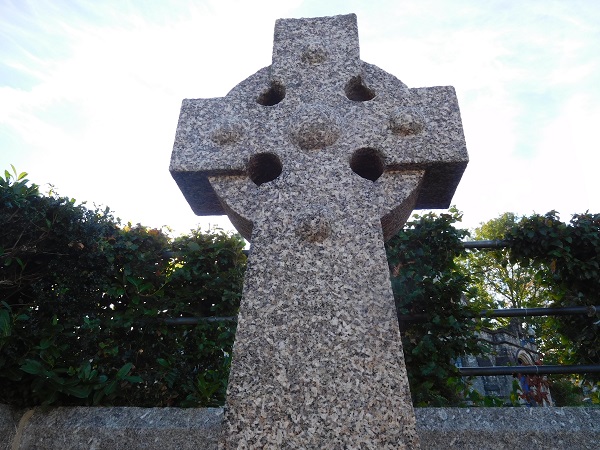
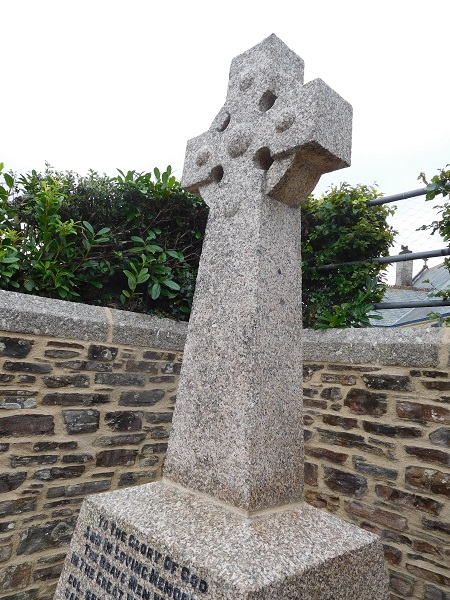
The memorial consists of a plain wheel-head cross. The head of which is decorated with raised circular embellishments called ‘Roundels’.
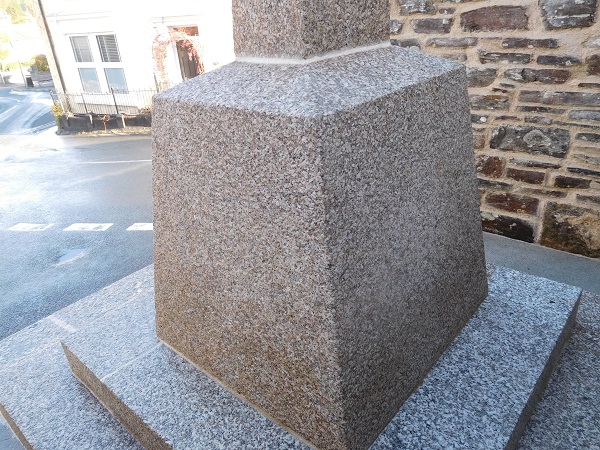
The 5 foot (1.5m) cross stands on a tall trapezoidal plinth, and the whole stands on a two-stepped square base, all of which is cut from local Dartmoor granite. Almost all the jointing on the granite cross and its base had failed. These were cut out, prepared and re-pointed in a lime mortar.

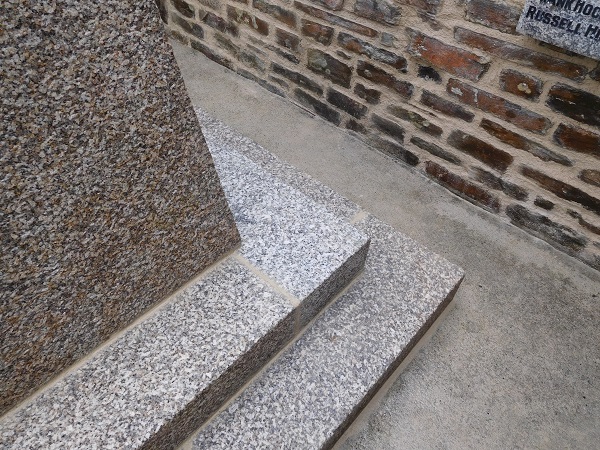
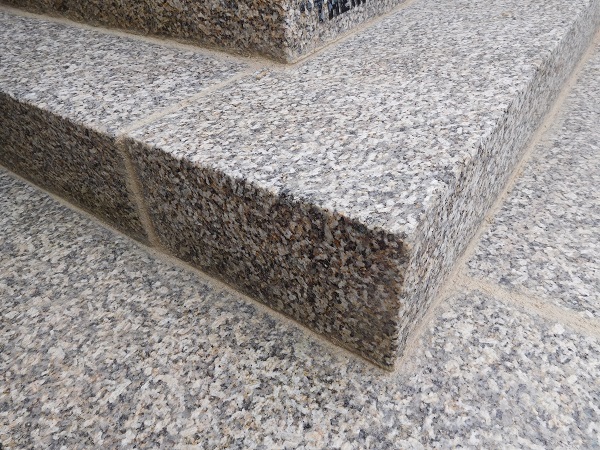
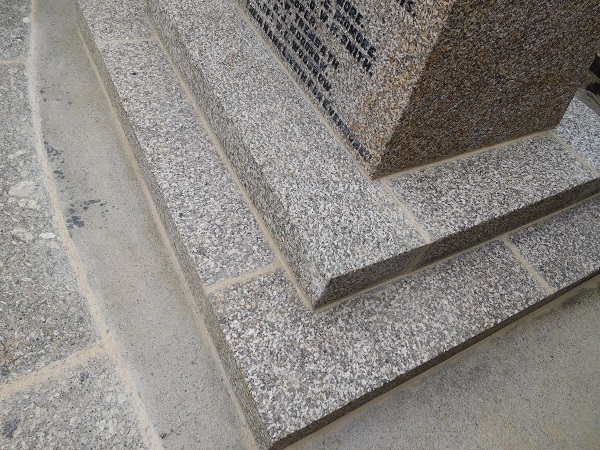
The memorial was unveiled on Sunday the 20th of February 1921 by Major A. Irving Muntz and dedicated by the Venerable E. F. Newman, Archdeacon of Plymouth.
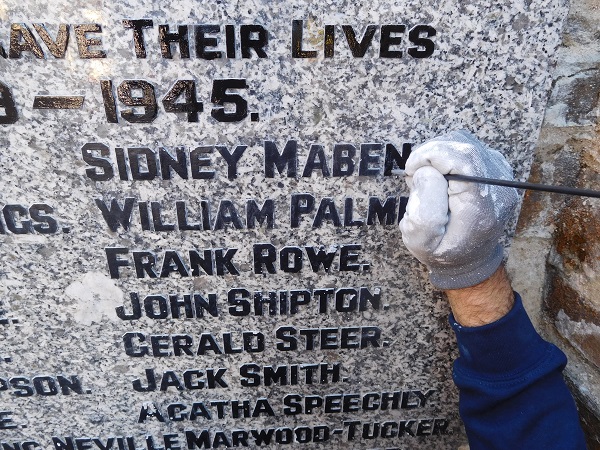
The next task was to re-paint the raised lead lettering. The letters on the memorial commemorating those that had died during the 2nd world War were painted first.
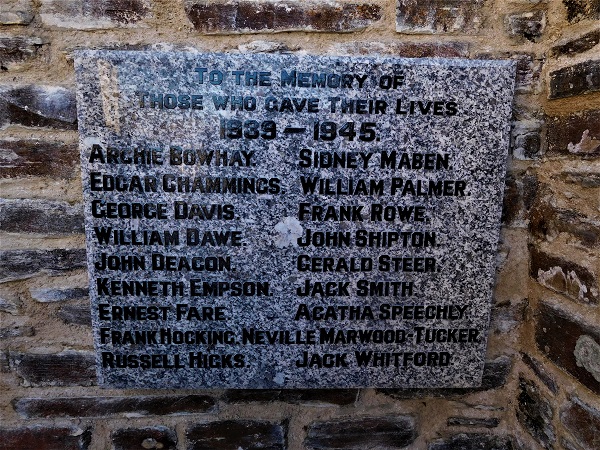
Then the lettering honouring those who gave their lives during the 1st World War were re-painted.
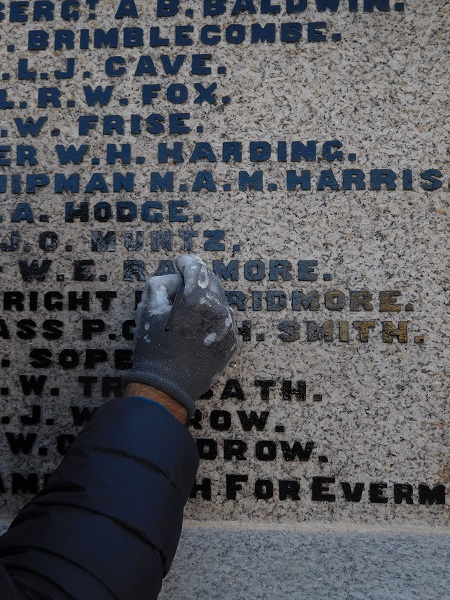
Re-pointing was also carried out to the wall underneath the granite kerb edging along the base.
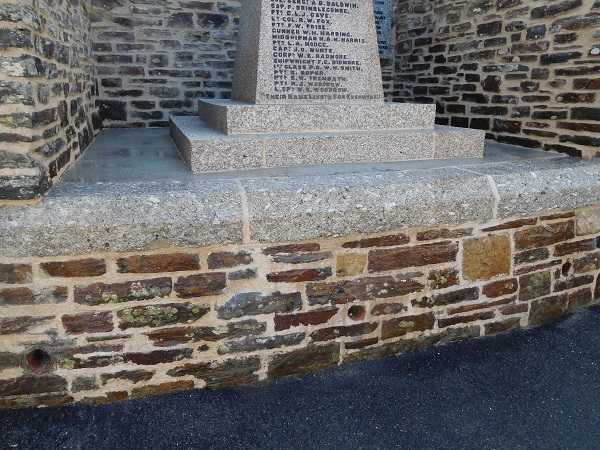
Further re-pointing was carried out to the walls either side of the enclosure, and this was done to finish everything off.
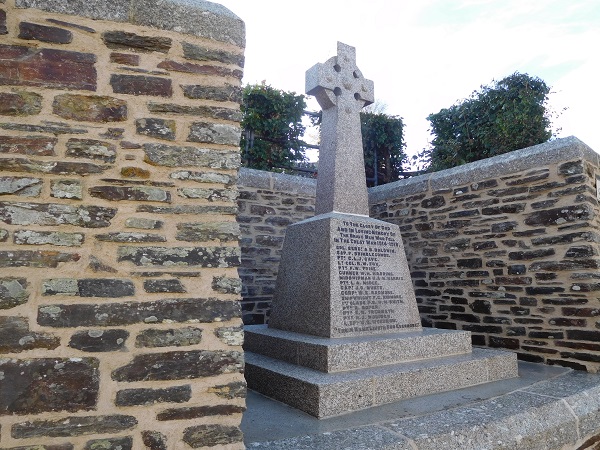
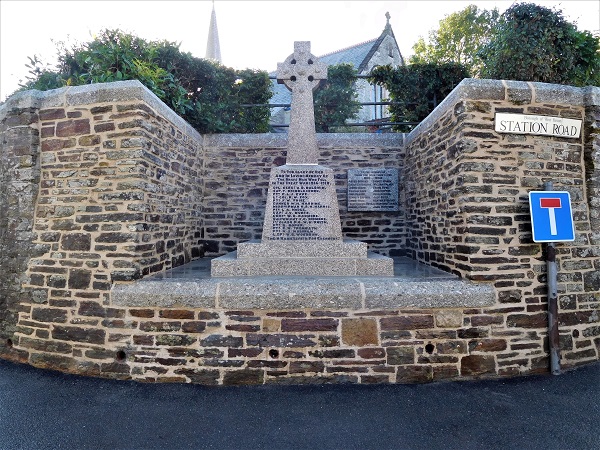
It’s impossible to picture every face behind all of the names inscribed on memorials up and down the country but here in Horrabridge there are 16 names set into the granite memorial honouring the local men killed during the First World War. Below are the biographies of those men. Compiled by Peter Hamilton-Leggett, they give us an insight as to who these brave men were.

Sergeant Alfred Barnett BALDWIN.
Born in Southsea, 1871. Son of Alfred and Julia Baldwin. He married Alice Greedy Dyke in East Stonehouse in 1895. He was a professional soldier having enlisted in the Marines in 1888. In 1904 he was awarded the R.N. Long Service and Good Conduct medal. Having completed his 21 years of service he was discharged on the 3rd of August 1910. Six weeks later he enrolled into the Royal Fleet Reserve. At 39 he is described as a Royal Marine Pensioner and also an Auxiliary Postman. At the beginning of the war Colour Sergeant Baldwin was called up and chosen for the Royal Naval Division (R.N.D.) or Winston’s Little Army. He saw service at Dunkirk and the Defence of Antwerp in October 1914. By early 1915 he was part of the Mesopotamian Expeditionary Force. Baldwin was the first R.N.D. casualty on the Gallipoli Peninsular and was buried at sea. He was aged 43. He left a 43 year old widow and 3 children aged 18, 15 and 5. His medals are now in a private U.K. collection. He is also commemorated on the Plymouth Naval Memorial, (panel 7).

Sapper Percy John BRIMBLECOMBE.
Born on the 1st of July 1894 to John and Francis Catherine Brimblecombe of North Hill, Plymouth. His parents moved to The Green, Sampford Spiney soon after they were married where his father was the rural postman. He attended Horrabridge School leaving in 1907 to take up an apprenticeship. In 1914 Percy joined The Royal Engineers 12th Field Company. He saw action in France and Flanders. He was killed in action on the 9th of August 1915 aged 21. He had been awarded the 1914-1915 Star medal, the 1914 British War medal and qualified for the Victory medal. He is remembered on the Thiepval memorial in Picardy, France and also on the Callington War memorial.

Lance Corporal Christopher Alfred CAVE.
Christopher was born in Plymouth in 1884. His father, William James Cave, was a plumber in the Dockyard and his mother, Mary Ann, ran the White Lion Inn, Clarence Place, Plymouth. By 1911 the family were living at 7 Maderia Villas, Horrabridge. In 1914 he enlisted into The Devonshire Regiment before transferring to the Gloucestershire Regiment where he saw action in France and Flanders. In July 1916 he was wounded and died on the 22nd of July. He was aged 32. He had been awarded the usual 3 medals and was buried in Longuenesse Souvenir Cemetery, Pas de Calais. When his widowed mother, Mary, was informed of his death she had moved to Bibiani, Horrabridge.

Lieutenant Colonel Reginald Wilson FOX.
Reginald Fox was born in 1866 in Wellington, Somerset. He was the second eldest son of Charles and Caroline Fox. His father owned the banking firm Fox, Fowler & Co. A branch opened in Tavistock when they took over the Tavistock Bank (Gill & Son) in 1889. Reginald was educated at Clifton College, Bristol and Clare College, Cambridge where he played cricket for Cambridge University. In 1881 he married Sophia Mabel Pease. By 1902 they were living in Grimstone Manor. He was on the board or treasurer of numerous Tavistock institutions. He also had two major passions, horses and the army. He was a well known horse judge. On the military front he was Commanding Officer of the Volunteer Battalion 2nd (Prince of Wales) Devonshire Regiment based in Bedford Square Tavistock. In 1914 he resigned his commission and was appointed to the command of the 6th Devon Regiment, with which he went to India and later to Mesopotamia. He was killed in action during the first relief of Kut, Mesopotamia on the Ujailah Redoubt. He was awarded the Victory medal, The British War medal and the Territorial Forces War medal. He is also remembered on the Basra War Memorial, Iraq, on a brass plaque inside Wellington Church and in the War List of the University of Cambridge 1914-1918.

Private Frederick William FRISE.
Son of Frederick and Jessie Elizabeth Frise of Dostabrook Cottage, Horrabridge. He was born in 1899. He enlisted in Plymouth at the outbreak of war, joining the 2nd Battalion, Devonshire Regiment. He saw action in France and Flanders and almost survived the war. He was awarded the British War medal and the Victory medal. He was captured at Berry au Bac and taken prisoner on the 27th of May 1918. He was sent to Friedrichsfeld prison camp. His record card lists him a ‘Schneider’ or tailor by occupation. He died of pneumonia and is buried in the St. Avold Military Cemetery, Moselle, France.

Gunner William Henry HARDING.
William was born in Tavistock in 1892 to Charles and Catherine Harding. By 1911 the family was living at Magpie, Horrabridge and nineteen-year old William was following in his father’s footsteps working at harness making. At the initial outbreak of war, William enlisted in the 4th Wessex Battalion of the Royal Horse Artillery. Almost at once he moved to the training camp on Salisbury Plain. It was whilst on initial training and before he could see any action that William died on the 9th of October 1914. His body was returned to Horrabridge where he was buried with full honours in St. John’s churchyard. His grave can still be seen today south-east of the church. He was aged 22 years.

Midshipman Malcolm Alfred milner HARRIS.
Malcolm was born in 1900 in Simons Town, South Africa. His father, Rear Admiral Sir Robert Hastings Penruddock Harris (1844-1926) was Commander-in-Chief of the Cape of Good Hope Station. Just before 1908 the family moved to The Brake, Yelverton when Sir Robert retired. Five months before his sixteenth birthday Malcolm enlisted into the Royal Navy (the 1st of January 1916). After a very brief training he was given the rank of Midshipman (the 14th of January 1916) and joined the crew of H.M.S. Defence, celebrating his sixteenth birthday whilst on board. Just over two weeks later he was to see violent action at the Battle of Jutland, the largest sea battle of the war. The Defence was hit by two salvoes from the German ships that caused both of its magazines to explode. The ship exploded and sank almost immediately with all loss of life, 849 men and 59 officers. Only a few bodies were recovered for burial. He is also remembered on the Crapstone Memorial and The Plymouth Naval Memorial. His parents are buried in Walkhampton churchyard.

Private Lionel Archibald HODGE.
Born in 1896, the son of Richard and Thirza Hodge. Lionel enlisted at Plymouth joining the Devonshire Regiment. He was killed in action whilst fighting in Egypt on the 3rd of December 1917 aged 22 years. At that time his parents were living at East Crowndale, Whitchurch. He had won two medals, the Victory and the British War medals. He is also remembered on the Jerusalem Memorial.

Driver James LEWIS.
James was born in Bermuda, West Indies in 1896 to James and Mary Lewis. By 1911 the family had moved to 3 Station Road, Horrabridge where both father and son were gardeners. James joined the 3rd Devon Battery, Royal Field Artillery. He survived the war but died of wounds on the 3rd of July 1921, aged 25 years. Although not named on the memorial he is buried in St. John’s churchyard.

Captain Oscar Frederick MUNTZ.
Born in 1877. His father, George Muntz of Umberside Hall, Tamworth, died in 1898 leaving an estate valued in excess of one million pounds. Oscar was educated at Clifton College, Bristol and Cirencester Royal Agricultural College. In 1902, aged 25 years, he joined the Imperial Yeomanry (North Devon Hussars) where he was able to indulge in his favourite sport of polo. It was probably around this time that he either rented or purchased property in Goodameavy where he formed a stud of polo ponies. By 1910 he was at Heathcot, Yelverton. It was only natural that he should meet up with Imogen Mary Collier whose parents owned Foxhams. She was renowned for her ponies and pony breeding. The couple married on the 1st of February 1915 in St John’s church, Horrabridge. On the 5th of October 1915 he joined the British Expeditionary Force ( the B.E.F. was the force sent to the Western Front at the beginning of the war). He returned home whenever he could and always stayed at Foxhams. He was awarded the usual three medals. Whilst away his wife continued breeding and showing horses. Oscar died of wounds received in an assault on the heavily contested Moislains Wood on the 4th of September 1918. He was buried at Heilly Station Cemetery, Mericourt-L´Abbe, France, (grave VII. B. 7.).

Corporal William Edward RADMORE.
William was born at 8 Wyndham Street, West Plymouth in 1877 to George and Anna Radmore. After school, William trained to be a junior clerk and had left home by 1901. Aged 37 he joined the Army Service Corp on the 9th of October 1914. He saw active service and was awarded the usual three medals which were the Star, the British and the Victory medals. He was soon promoted to Corporal and saw some action in France and Flanders. He died in Plymouth on the 23rd of November 1916. When his elderly parents were informed of his death they were living at Haytown, Sampford Spiney. He is buried in Ford Park Cemetery, Plymouth.

Ship’s Carpenter Frederick George RIDMORE.
Born on the 25th of July 1896 at Cole Cottage, Sampford Spiney to Louise and Amelia Ridmore. Frederick, aged 14, was earning a living as a boy golf caddy on the golf links (probably at Yelverton). He joined the Royal Navy at the outbreak of war as a ship’s carpenter. At some point he joined H.M.S. Raglan which, on the 20th of January 1918, was attacked by a Turkish battlecruiser, a light cruiser and four destroyers. Raglan was sunk with the loss of 127 lives. His body was never recovered. He is also remembered on the Plymouth Naval Memorial, (plot 28).

Stoker 1st Class petty officer William Henry SMITH.
Born in 1891, William was the son of William and Edith Smith. After a brief stay in Tavistock the family moved to No. 1 Magpie Cottages next to the Magpie Bridge. By 1911 the family had grown and young William found himself with six siblings. His father had progressed from a pointsman to a signalman on the G.W.R. at Horrabridge. At the outbreak of war William, now 23, joined the Royal Navy. He eventually found himself aboard the Plymouth built H.M.S. Indefatigable, a battlecruiser. It was not long before he found himself involved in the largest naval battle of the war, the Battle of Jutland. On the 31st of May 1916 she was hit several times in the first minutes, the explosion ripping a hole in her hull, and a second explosion hurled large pieces of the ship 200 feet in the air. Only two of the crew of 1,019 survived. William’s body was never recovered. He is also remembered on the Plymouth Naval Memorial.

Private George SOPER.
George was born in 1887 at Chudleigh to William and Mary Soper. By 1901 the family had moved to Higher Town Cottages in Horrabridge. Young George, now 14, found employment as a butcher’s boy. By 1911 George had left home and was working as an agricultural labourer in Chudleigh. At the outbreak of war five of the Soper children enlisted. The eldest, William, and youngest John, survived the war unscathed. Ernest and Frank were wounded and discharged. George, who had joined the Devonshire Regiment, was killed in action on the 14th of May 1916 aged 30. He was buried in Aveluy Communal Cemetery Extension, Somme, France.

private Ernest Walter TREMBATH.
Born on the 27th of January 1893 to William and Elizabeth Trembath of The Elms, Sampford Spiney. His father William, was working for himself as a carrier and houseman. By 1912 all the family had emigrated to Canada as farmers. Once Canada entered the war Ernest enlisted. He joined the 78th Manitoba Regiment on the 12th of June 1916. He saw action in France and died of wounds whilst at the Canadian Clearing Station on the 1st of February 1918 aged 25 years and is buried at the Barlin Communal Cemetery Extension, Pas de Calais, France.

The Woodrow Brothers. Their parents, James and Louisa Woodrow, lived at Eggworthy. James was gamekeeper to Edwin Spurrel of Eggworthy Farm. They had two children, Walter and John.
Lance-Corporal Walter George WOODROW.
Walter was born in 1892 at Witham Friary, Somerset. He was educated at Sampford Spiney School. After leaving school he became a domestic gardener. He volunteered for active service and joined 1st Battalion, The Devonshire Regiment in September 1914. He served with the Expeditionary Force in India, Egypt, Palestine as well as France and Flanders. He was killed in action in the Forest of Reims on the 20th of July 1918 aged 26 years and was buried where he fell in an unmarked grave.

Private Reginald John WOODROW.
John was born in 1894. He was also educated at Sampford Spiney School. He volunteered for active service and joined the 5th Battalion, The Devonshire Regiment in September 1914. He served with the Expeditionary Force in India, Egypt, Palestine as well as France and Flanders. He was killed in action in the Forest of Reims on the 20th of July 1918 aged 24 years and was buried where he fell in an unmarked grave.

It is not known how many war memorials there are in Great Britain, but their numbers are certainly in the tens of thousands. In the aftermath of the First World War, the people of Britain needed a focus for their grief, loss and pride. War memorials were erected across the U.K. in the greatest wave of remembrance our history has ever seen to honour those that had died during this conflict. They form an important part of our rich cultural heritage and connect us with the war that shaped the world we live in today. Only around 3000 free standing war memorials are currently listed by Historic England and only around 20 of these are Grade I listed. Over this centenary period Historic England are committed to doubling those numbers.
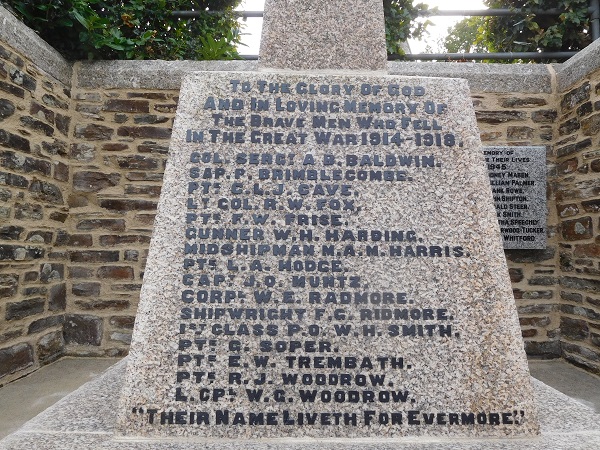
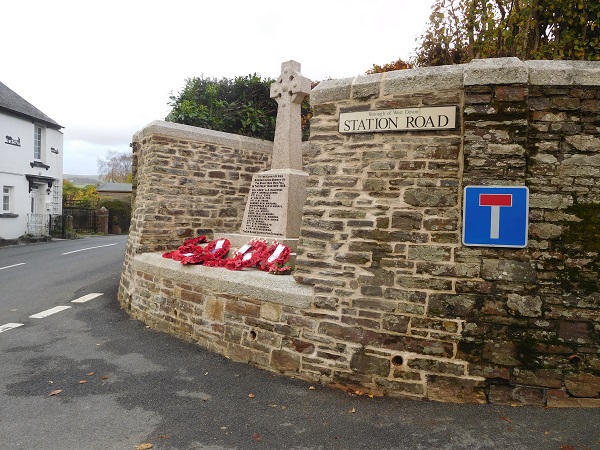
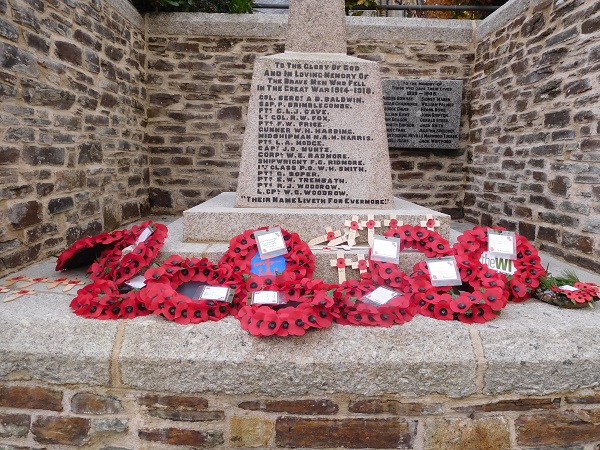
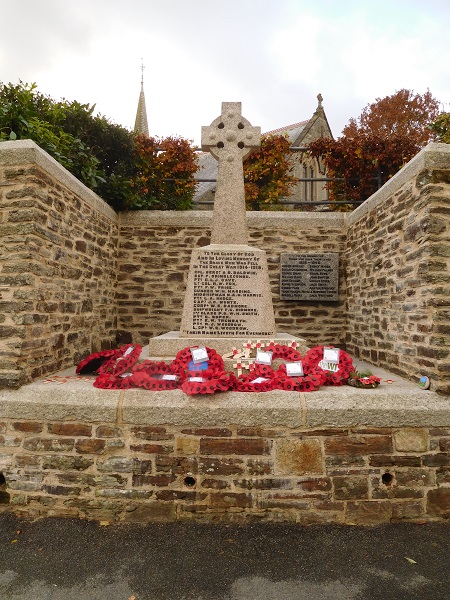

They won’t be forgotten.


